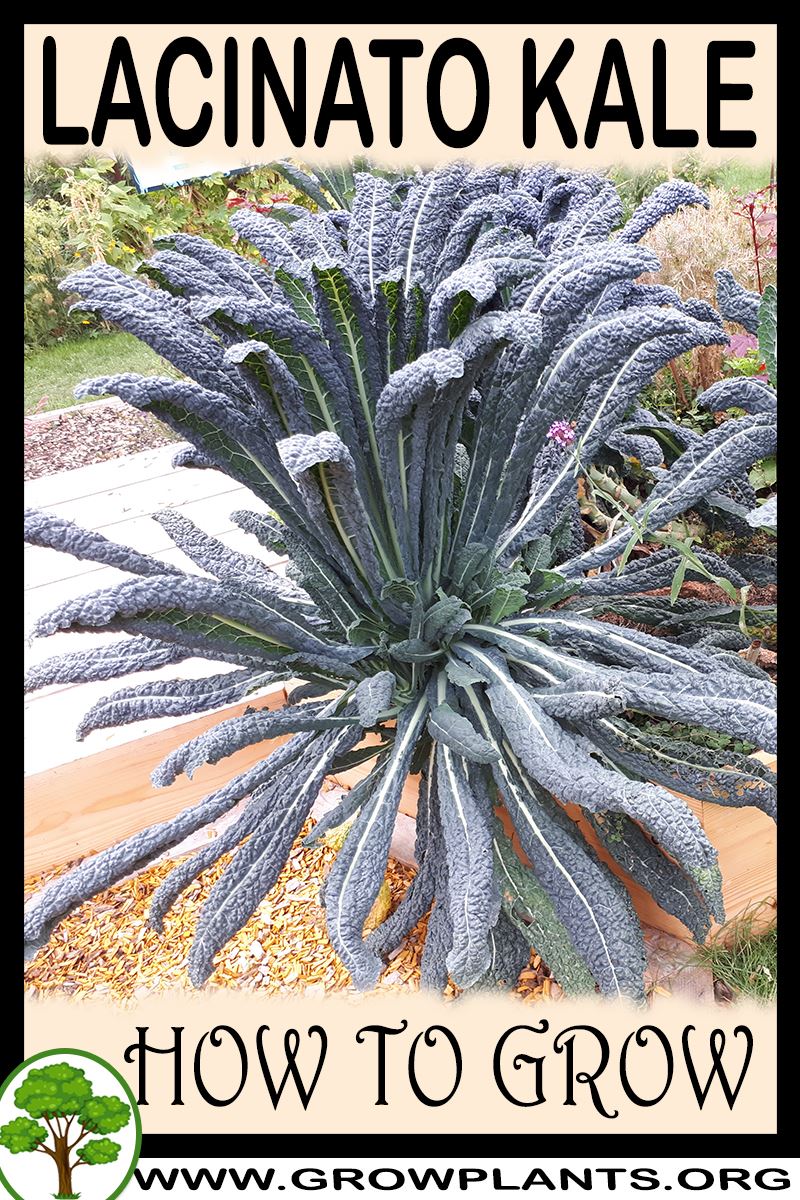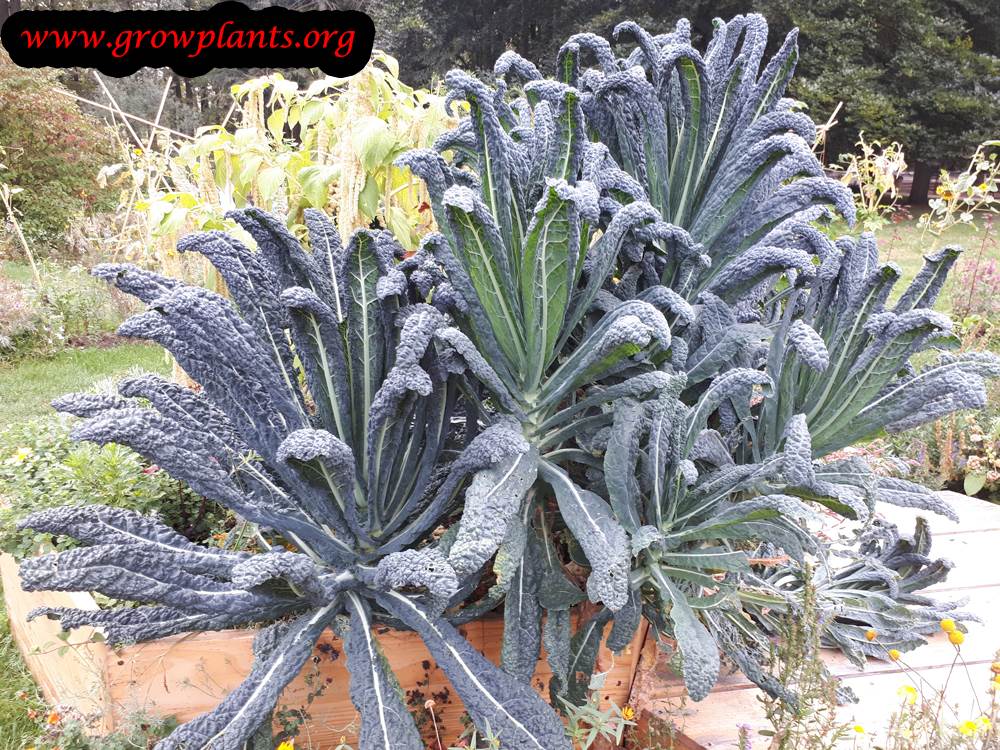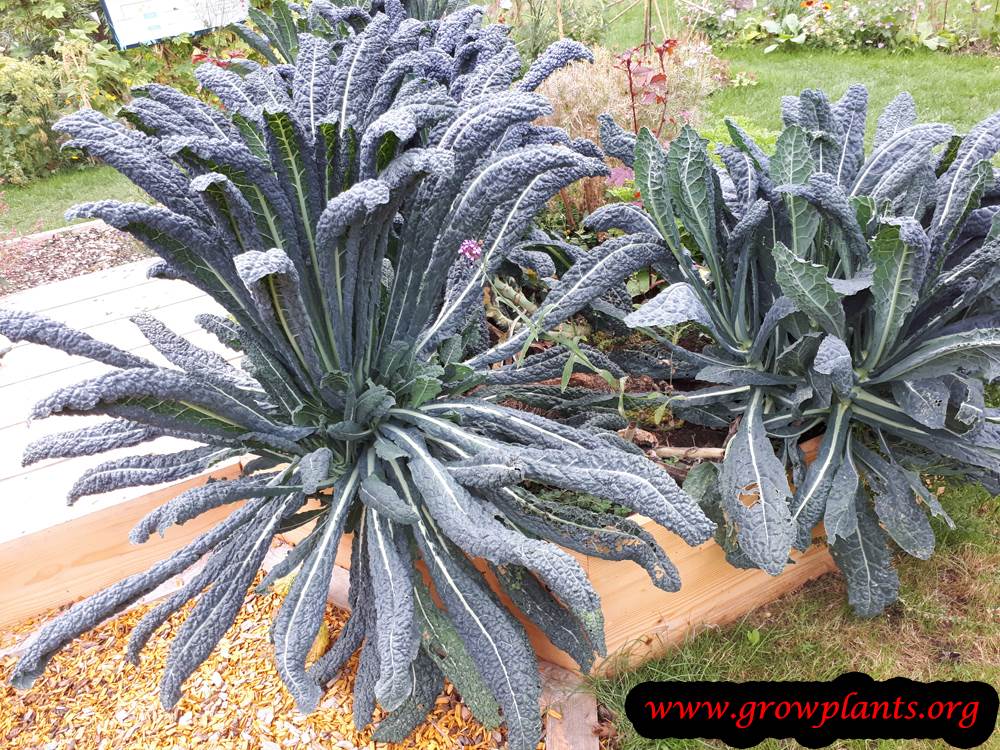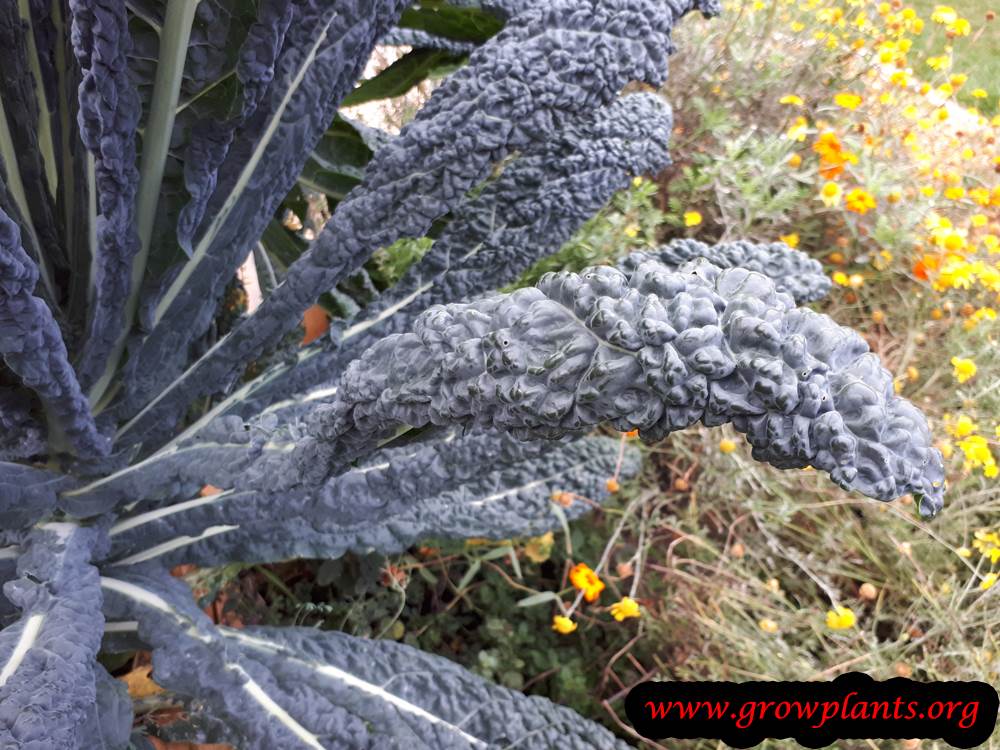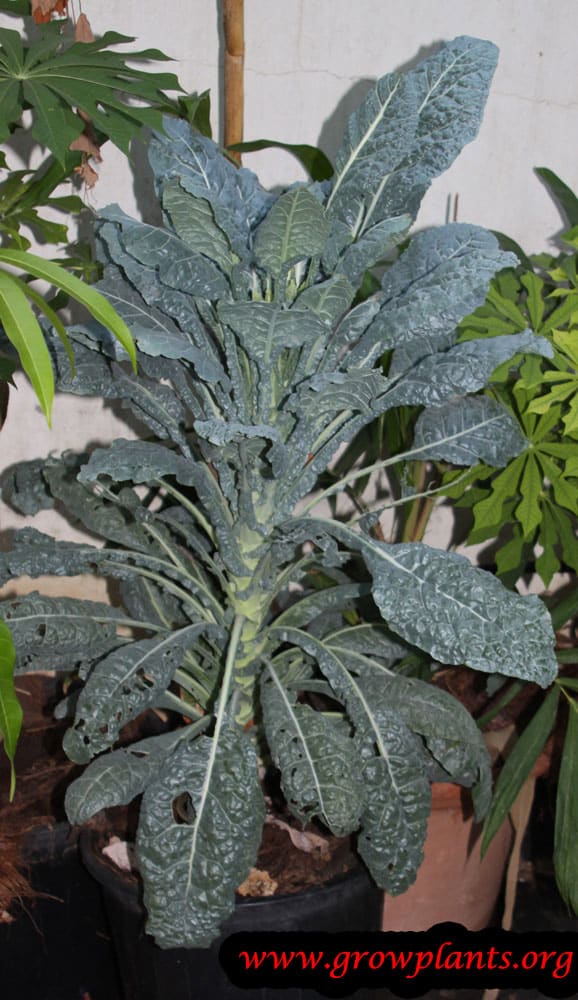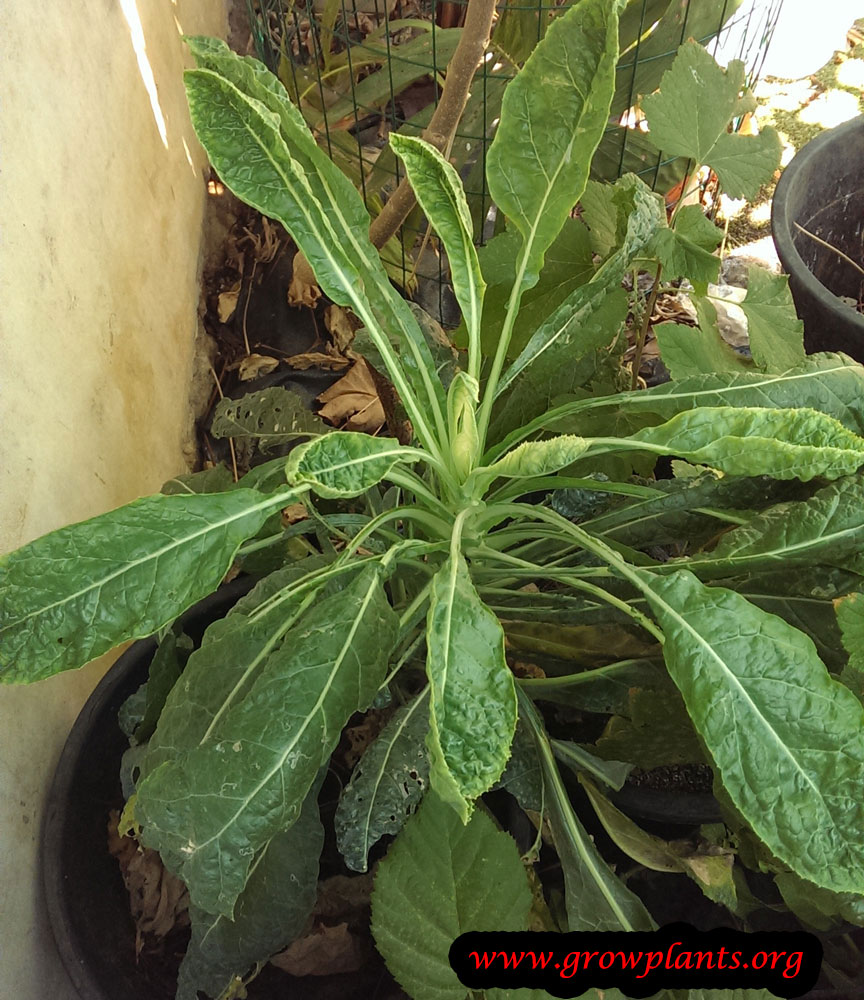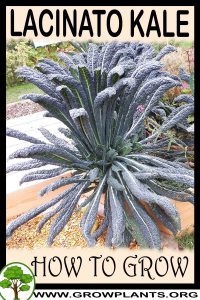
Lacinato kale grow and care – leaf plant variety of Kale also known as Tuscan kale, Dinosaur kale or Tuscan cabbage, Lacinato Kale grow as biennial, perennial evergreen plant and possible to grow as annual, also used as ornamental plant for the colored leaves, grow in temperate, mediterranean or subtropical climate and growing as perennial in hardiness zone 7-10 and as annual in hardiness zone 2-6 and 11, when grow in hardiness zone 11 need to different care and even can grow as perennial in hardiness zone 11a
Lacinato Kale leaves
Leaves with curly edges the leaves with bumps and remained dinosaur skin, the color of the leaves: green blue, harvesting season change by the temperature and sun exposure.
Flower color yellow, the small flowers grow on inflorescence.
Lacinato Kale for sale – Seeds or Plants to Buy
How to grow Lacinato Kale growing and care:
How to grow dinosaur kale
Rich soil, moist soil, Clean Larvae from the leaves, mulch
How to care Tuscan kale
fertilizer 2-3 a year, prune dead leaves in case of pieris better to prune all the plant to cut all the leaves and wash the plant well and check that there aren’t any more eggs
What is the best way to start growing?
Plant / Seedling / Seed (sowing care bellow) / Vegetative
Is it necessary to graft or use vegetative reproduction?
No, but it’s possible
Difficulties or problems when growing:
Sensitive to hot temperature, white butterfly can eat a lot of leaves and cause irreversible damage
Planting season:
Spring as annual plant in hardiness zone 2-6 (possible in the summer but will die anyway in the autumn), autumn as annual in hardiness zone 11, as perennial spring to summer in hardiness zone 7-10a, autumn to winter in hardiness zone 10b (also possible to sow in the spring will germinate well but will grow slowly especially in location with hot summer)
Pests and diseases:
Pieris (butterfly), prodenia (Spodoptera)
Pruning season:
When it’s start to bloom unless you want the seeds
How to prune:
Prune the beginning of the inflorescence
Size of the plant?
30-80 cm, 12-32 inches
Growth speed in optimal condition:
Fast growing / Medium growing
Water requirement:
Average amount of water / Big amount of water
Light conditions in optimal condition for growing:
Full Sun / Half Shade / Full Shade (in hardiness zone of 11, it’s highly recommend, and in hardiness zone 10b better to plant it in shade because the leaves become bitter in the summer in the sun)
Is it possible to grow indoor as houseplant?
Yes, but need a lot of light
Growing is also possible in a pot / planter /flowerpot / containers:
Yes, start with container that bigger than the plant at least 50-70%, need to switch the soil once in a few years by new soil, better to do in summer, when the plant arrive to the desirable size need to prune the root and prune the plant, use potting mix or peat soil with perlite and mix it with hummus and organic matter, use chopped mulch to keep the soil moist, let the bottom of the pot fill in water but dry in the same day, fully mature plant will grow well in container 25L (6.5 gallons).
Blooming information
Bloom season:
Summer to autumn, possible that it will bloom in the spring in hardiness zone 10b-11
General information about the flower
Small yellow flowers grow on inflorescence
Thinning the bloom:
Unless you want to save the seeds recommend thinning
Pollination is done by:
Bee and butterfly
Edible leaves
Leaves harvesting season:
All year, but better not to harvest when bloom (or prune the bloom stems) also better to prune in hardiness zone 10b-11 in the autumn to early spring, the leaves become bitter in the heat of the summer
How to harvest the leaves?
Trim in the base of the leaf
Information about leaves:
Leaves with curly edges the leaves with bumps and remained dinosaur skin, the color of the leaves: green blue depend the cultivar
Uses of Lacinato Kale leaves:
Eaten raw, Salad, Used for cooking
How to grow and care for Tuscan kale seeds
Sowing requirement:
Planting when it’s started to be cold
Saving and care seeds until sowing:
Dry, cold temperature
Sowing season:
Spring as annual plant in hardiness zone 2-6, autumn as annual in hardiness zone 11, as perennial spring to summer in hardiness zone 7-10a, autumn to winter in hardiness zone 10b
Planting spacing:
30-50 cm
Depth of Sowing:
0.5-1.5 cm
Conditions for seeds germinate:
Moist drained soil
Watering requires for Seeds:
Big amount of water
Germination time:
7-20 days
Condition of seedling:
Fertilized ground, light shade, regular watering, and cold temperature
Do the seeds require burying?
No
Vegetative Reproduction
How to make Vegetative Reproduction in?
Cuttings
The best time for vegetative reproduction:
Spring / Autumn
How much time does it take to grow roots in vegetative reproduction?
2-4 Weeks
What is the treatment for vegetative reproduction?
Put the cutting in water, moist soil shade and vegetative hormones
Scientific name:
Brassica oleracea – Acephala Group
Categories
| Blooming Seasons |
|
|---|---|
| Edible Parts |
|
| Culinary uses |
|
| Flower colors |
|
| Climate |
|
| Harvest Season |
|
| Leaf color |
|
| Ornamental parts |
|
| Plant growing speed |
|
| Plant life-form |
|
| Plant Uses |
|
| Planting Season |
|
| Plants sun exposure |
|
| Watering plants |
|
| Hardiness zone |
|


